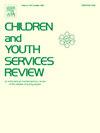Nonlinear child protection intervention and child population density: A prevalence study
IF 2.4
2区 社会学
Q1 FAMILY STUDIES
引用次数: 0
Abstract
Background: Prior studies suggest that numerous variables such as service availability, socioeconomic vulnerability, and other features of the contexts around families may account for clustering of child protection cases in certain areas. Notions of “spatial equity” prompt us to inquire about CP involvement across differently populated geographies. Objective: This study aims to illustrate whether child population density plays a significant role in the likelihood of childhood prevalence of involvement in the child protection system. Participants and Setting: This study draws from administrative CP data spanning 2000 to 2017 across 10,640 Census Dissemination Areas (DAs) of Quebec, the most socially progressive jurisdiction in North America where many family-oriented services and income transfers are universal. Methods: Using cumulative risk life table analyses, we calculate actual prevalence rates of confirmed CP reports, findings of a child’s security or development being compromised (SDC), and placement out of the home. Results were presented according to geographic tiers defined by their child population density. Results: Results show that children in the lowest population density tier experienced the highest prevalence of CP involvement (19.6% confirmed report, 12.4% SDC, 6.9% placement). The second highest prevalence rates were found in the highest population density tier (15.3% confirmed report, 9.6% SDC, 6.2% placement). The middle density tier fell below average with the lowest rates (12.4% confirmed report, 7.1% SDC, 3.9% placement). Conclusions: The findings suggest that there is a nonlinear relationship between population density and prevalence of child protection involvement. We propose that this may relate to availability, accessibility, and appropriateness of both formal services and informal supports, as well as demographic patterns of socioeconomically vulnerable, Indigenous, and Black children living in certain areas of the province. Findings should prompt further inquiry into mechanisms of risk across regions to inform prevention policy.
非线性儿童保护干预与儿童人口密度:一项流行病学研究
背景:先前的研究表明,许多变量,如服务可用性、社会经济脆弱性和家庭周围环境的其他特征,可能是某些地区儿童保护案件聚集的原因。“空间公平”的概念促使我们探究不同人口稠密地区的CP参与情况。目的:本研究旨在说明儿童人口密度是否在儿童参与儿童保护系统的可能性中发挥重要作用。参与者和环境:本研究利用了魁北克10640个人口普查传播区(da) 2000年至2017年的行政CP数据,魁北克是北美社会最进步的司法管辖区,许多面向家庭的服务和收入转移都是普遍存在的。方法:使用累积风险生命表分析,我们计算确认CP报告的实际患病率,儿童安全或发展受到损害(SDC)的发现,以及离家安置。结果是根据儿童人口密度定义的地理层次来呈现的。结果:结果显示,最低人口密度层的儿童CP患病率最高(确诊报告19.6%,SDC 12.4%,安置6.9%)。第二高的患病率出现在人口密度最高的地区(15.3%的确诊报告,9.6%的SDC, 6.2%的安置)。中密度层低于平均水平,比例最低(确认报告12.4%,SDC 7.1%,安置率3.9%)。结论:人口密度与儿童保护参与率之间存在非线性关系。我们认为,这可能与正式服务和非正式支持的可用性、可及性和适当性有关,也与生活在该省某些地区的社会经济弱势儿童、土著儿童和黑人儿童的人口结构有关。调查结果应促使进一步调查跨区域的风险机制,以便为预防政策提供信息。
本文章由计算机程序翻译,如有差异,请以英文原文为准。
求助全文
约1分钟内获得全文
求助全文
来源期刊

Children and Youth Services Review
Multiple-
CiteScore
6.30
自引率
6.10%
发文量
303
期刊介绍:
Children and Youth Services Review is an interdisciplinary forum for critical scholarship regarding service programs for children and youth. The journal will publish full-length articles, current research and policy notes, and book reviews.
 求助内容:
求助内容: 应助结果提醒方式:
应助结果提醒方式:


